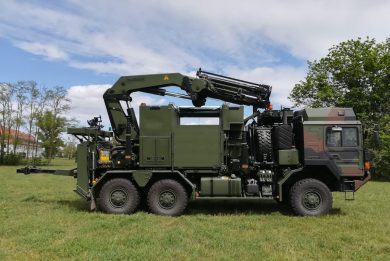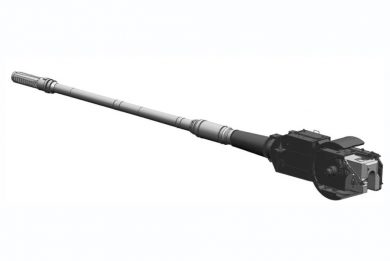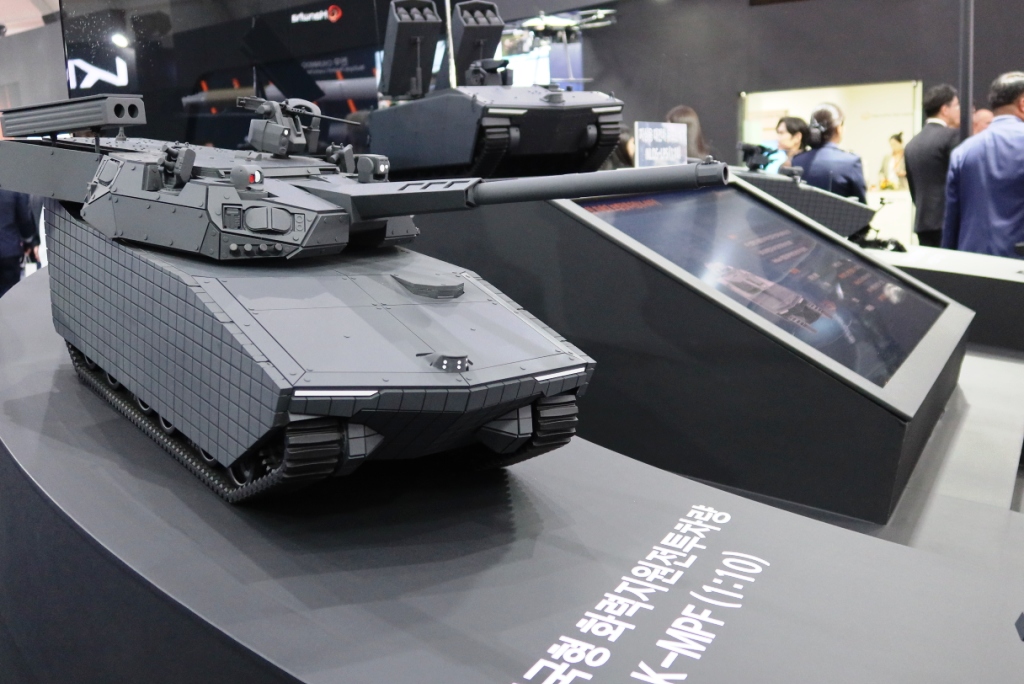
ADEX 2023 – Hanwha exhibits K21-derived armoured vehicles and more
At ADEX 2023 Hanwha exhibited a series of scale models some of them based on an improved version of the K21 infantry fighting vehicle, aimed at Korea but also at export
While proposing in the same pedestal its K-NIFV (Korean Next Infantry Vehicle), Hanwha was also showing a series of combat support vehicles based on an upgraded version of the K21 infantry fighting vehicle, of which the Republic of Korea Army (ROKA) has in service over 400 and should soon overcome the 550 mark.
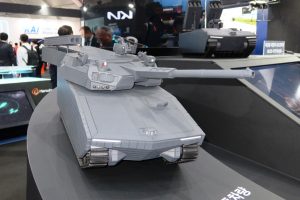
Born to be amphibious, the K21 has a mass limited to 26 tonnes. The K-MPF, for Korean Mobile Protected Firepower, drops the floating requirement, which means its mass can go over the 30 tonnes mark, giving Hanwha engineers some degree of freedom. The top priority requirement is to increase the hull protection, which will reach Level 6 according to STANAG 4569 on the front glacis, antimine protection becoming Level 3a/3b, EDR On-Line understanding however that Level 4 can be reached.
The initial proposal maintains the same powerpack of the original K21, the Doosan D2840LXE V-10 turbocharged diesel engine, which provides 750 hp and would keep the power-to-weight ratio at 25 hp/t. However new power solutions are emerging in South Korea, some of them hybrid, and might eventually attract some export customer.
The light tank version was the first to be unveiled in 2022. One option is installing on the Korean chassis the Cockerill 3105 turret armed with the Cockerill 105 mm high pressure gun, which is equipped with an autoloader containing 12 to 16 rounds.
The model exhibited at ADES 2023 was however fitted with a turret looking different from the 3105. The 105 mm gun features a thermal sleeve and the first part has a low-visibility cover. What looks like Elbit Systems’ Iron Fist is installed; sensors are fitted on the sides of the turret to cover the 360°, while the turrets with two effectors each are located right and left on top of the turret. On the two sides, at the front, we find the gunner and commander sights, a remotely controlled weapon station (RCWS) being located at the centre. A twin rocket launcher is integrated on the right rear side of the turret and is extracted when needed. It is to note that Hyundai WIA is manufacturing 105 mm guns and has developed low recoil systems that might ease the integration of such weapon on a light tank. This type of vehicle is attracting increasing interest in countries which infrastructures are unable to cope with heavy tanks and vehicles, and are often characterised by boggy terrain which would make mobility difficult for battlefield monsters.
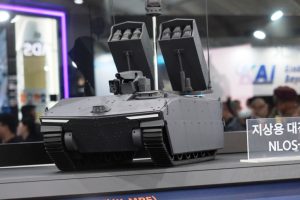
Leveraging the work done in developing the upgraded chassis for the light tank version, Hanwha is proposing two other versions on the same platform. The first is the indirect firepower. This is fitted with a self-defence RCWS and with an optronic gimballed system mounted on a telescopic mast, used for targeting. Its main weapons are the NLOS antitank missiles contained in two boxes mounted at the rear, each containing six missiles. According to information obtained these are under development and will have an 8 km range. This system is of interest of the ROKA that might use it to replace the 9K115-2 Metis-M missiles of Russia origin mounted on legacy K200A1 armoured personnel carriers.
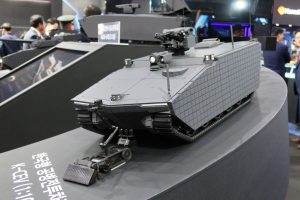
The second vehicle derived from the K-MFP is an engineer vehicle, based on the armoured personnel carrier configuration. It hosts a crew of three, driver, commander and gunner, and four sappers. It can be fitted with specific engineer systems, and operates together a ground unmanned vehicle.
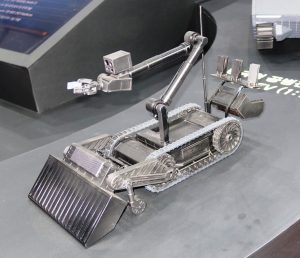
The latter was developed under a contract from the Korean Ministry of Defence, and its development was successfully concluded in August 2023 with the delivery of the prototype. A tracked chassis, it is equipped with a two segments arm and with mine and unexploded ordnance search system for route clearing. The UGV is obviously using a proprietary chassis as it is much smaller than the three previously described vehicles.
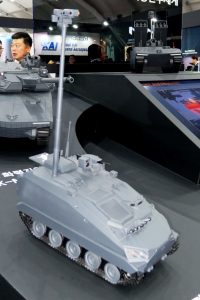
Last but not least comes the combat scout vehicle. Here the chassis is not originating from the Republic of Korea as it comes from Germany. The Wiesel platform provided by Rheinmetall has been equipped with a mast mounted optronic suite that allows carrying out long range reconnaissance. also thanks to the stealthy characteristics of the small 6 tonnes vehicle, which is also equipped with a rotary wing UAV hosted in a hangar at the rear, a landing platform protruding at the back for flight operations. The vehicle is fitted with an RCWS for self defence. While all the other previously described systems might well find use in ROKA units, the Wiesel-based one has not been considered with interest by the local military.
That said, Hanwha considers the K-MPF and its derivatives a potentially interesting product for the export market.
Photos P. Valpolini

